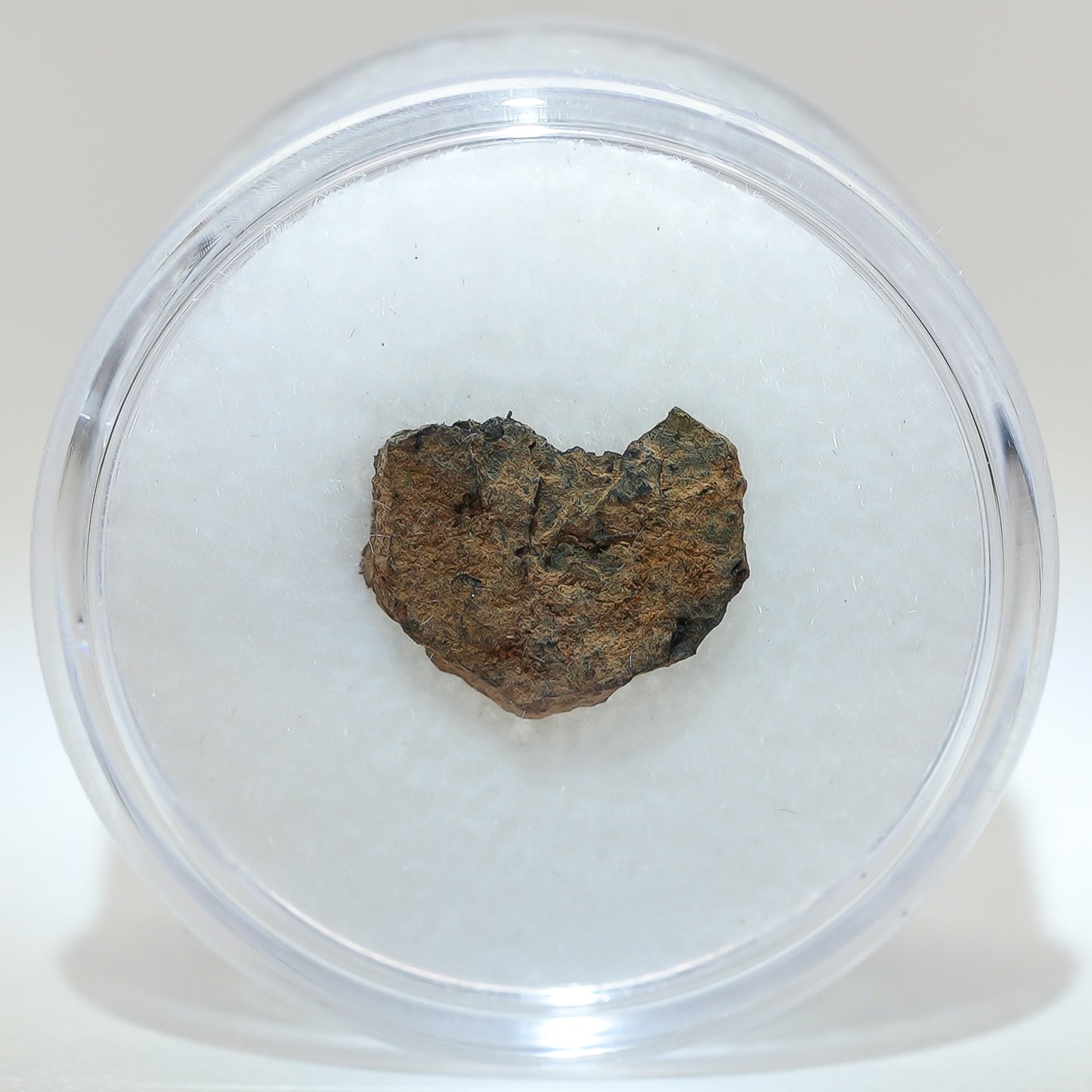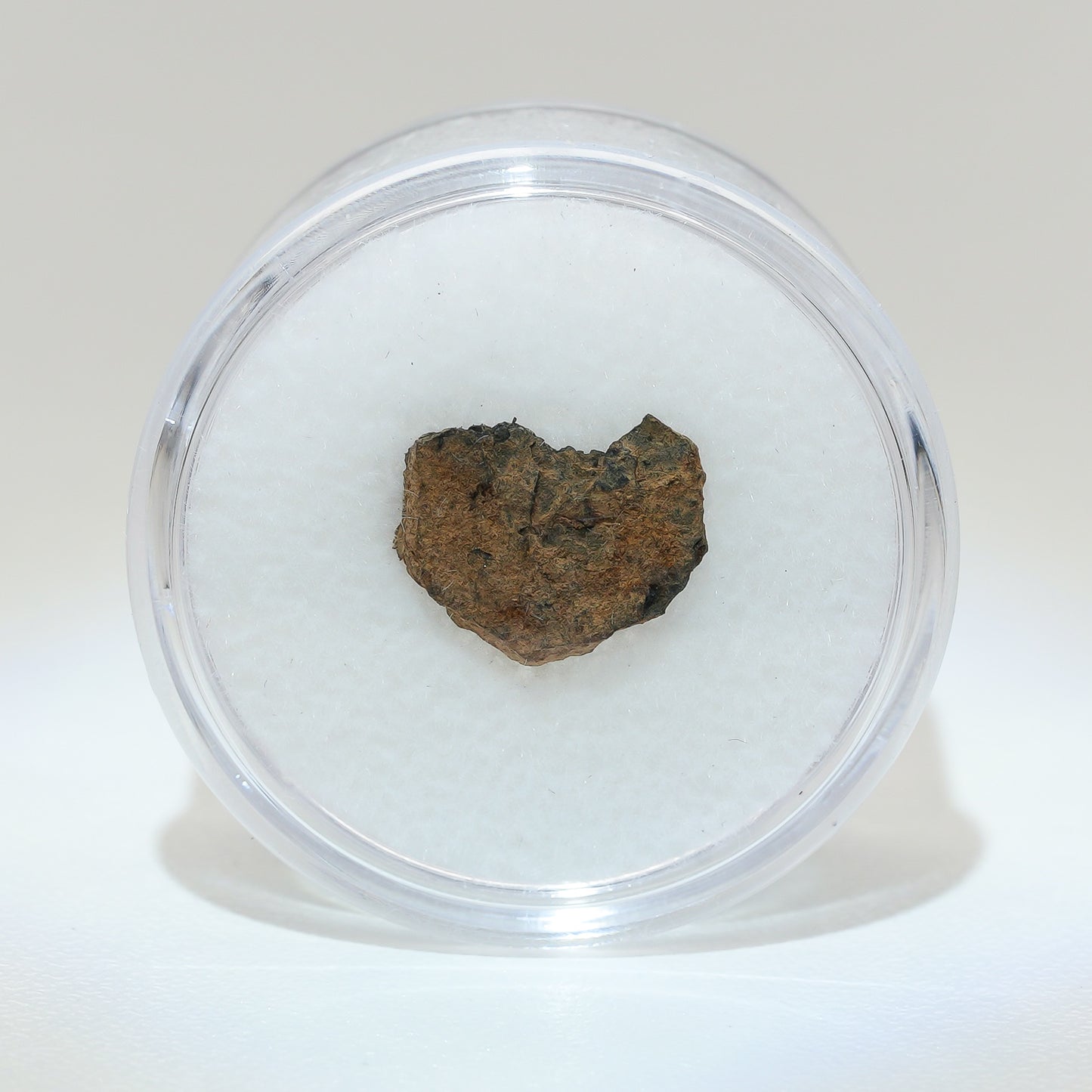Atmosphere Minerals
Gibeon Meteorite with Desert Patina from Namaland, Namibia, .5g
Gibeon Meteorite with Desert Patina from Namaland, Namibia, .5g
Couldn't load pickup availability
Gibeon Iron Meteorite with Desert Patina from the Namib Desert, Namaland, Namibia.
This Gibeon meteorite fragment specimen is from an old collection we acquired, exported from Namibia in the mid-90s, it has an almost heart-shape appearance with a rich desert patina. Includes specimen ID card and white foam collectors jar.
Gibeon meteorites have been a longtime favorite of meteorite collectors, valued for their aesthetic sculptural regmaglypts, fine etched Widmanstätten pattern and rich natural desert patina.
- Specimen Name: Gibeon
- Classification: Iron, IVA
- Place of Fall/Find: Namaqualand (Namaland), Namib Desert, Namibia
- Year Found: 1836
- Weight in Grams: .5g
- Size: 11mm x 8mm
- Includes 2x3" Cotton Gift Box and Specimen ID card
- Includes 1.25" Acrylic Collectors Jar
- Total Known Weight: 26,000kg
- You'll receive the Meteorite shown in the photos.
About Gibeon Meteorites
Gibeon impacted Earth in prehistoric times in Namaland, Namibia, Africa. These iron meteorites originate from the core of an ancient asteroid, dated at 4.5 billion years old. Gibeon meteorites were first collected by the Nama people and used for making tools and weapons. Gibeon was discovered and analyzed in 1836, officially classified and named after the nearest village town of Gibeon.
Gibeon is a fine octahedrite iron meteorite, this means when cut or sliced and an acid treatment is applied, the meteorite reveals a striking crystalline structure, known as the Widmanstätten pattern. The crystals are iron-nickel alloys, Kamacite and Taenite. Widmanstätten patterns are created in space, when the molten iron and nickel of planetary bodies begin the cooling process. As Taenite cools, plates of crystalized Kamacite grow through it, once the metal cools and hardens, the crystals stop growing and the pattern freezes. This cooling process occurs very slowly, over millions of years. Widmanstätten patterns are only found in celestial bodies from space, the pattern has never been replicated here on Earth.
Octahedrites are classified according to the thickness of the Kamacite plates. Coarse octahedrites have a band width of 1.5-3mm. Medium octahedrites have a band width of 0.5-1.5mm. Fine octahedites have a band width of 0.2-0.5mm. Below 0.2mm, three other types of octahedrites are apparent.
Are Gibeon Meteorites Rare?
Yes, Gibeon meteorites are a rare find, they are no longer readily available on the market. While many Gibeon meteorite specimens are in existence, most of these iron meteorites are already in private collections.
Gibeon meteorites were one of the most readily available meteorites in the past but are difficult to obtain now. In 2004, Namibia introduced a new National Heritage act, this placed an export ban on meteorites. Under this law, it's considered an offense to uncover or move a Gibeon meteorite from it's find location. Today Gibeon meteorites are traded among collectors, museums and a handful of meteorite dealers who exported before 2004, or acquired Gibeons from old collections. This is why uncut, whole individual Gibeon meteorite specimens continue to become more rare and valuable.
Share



